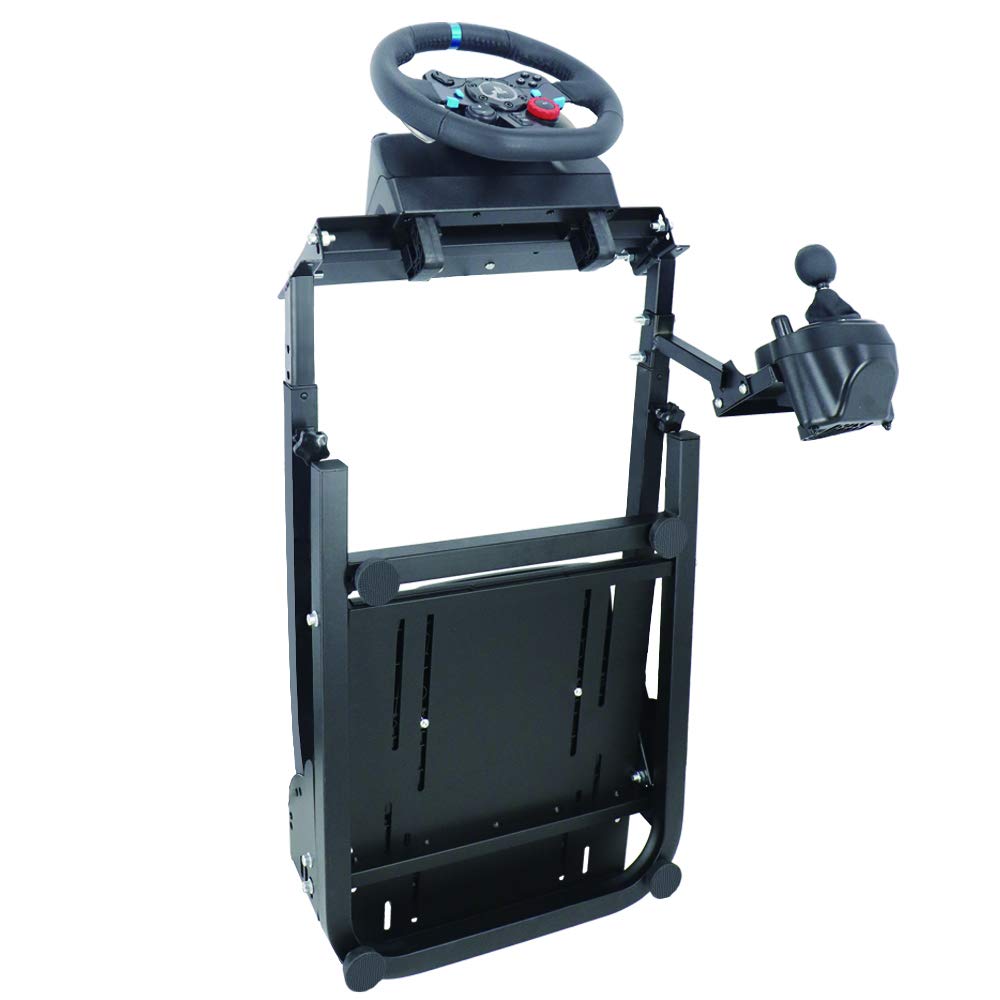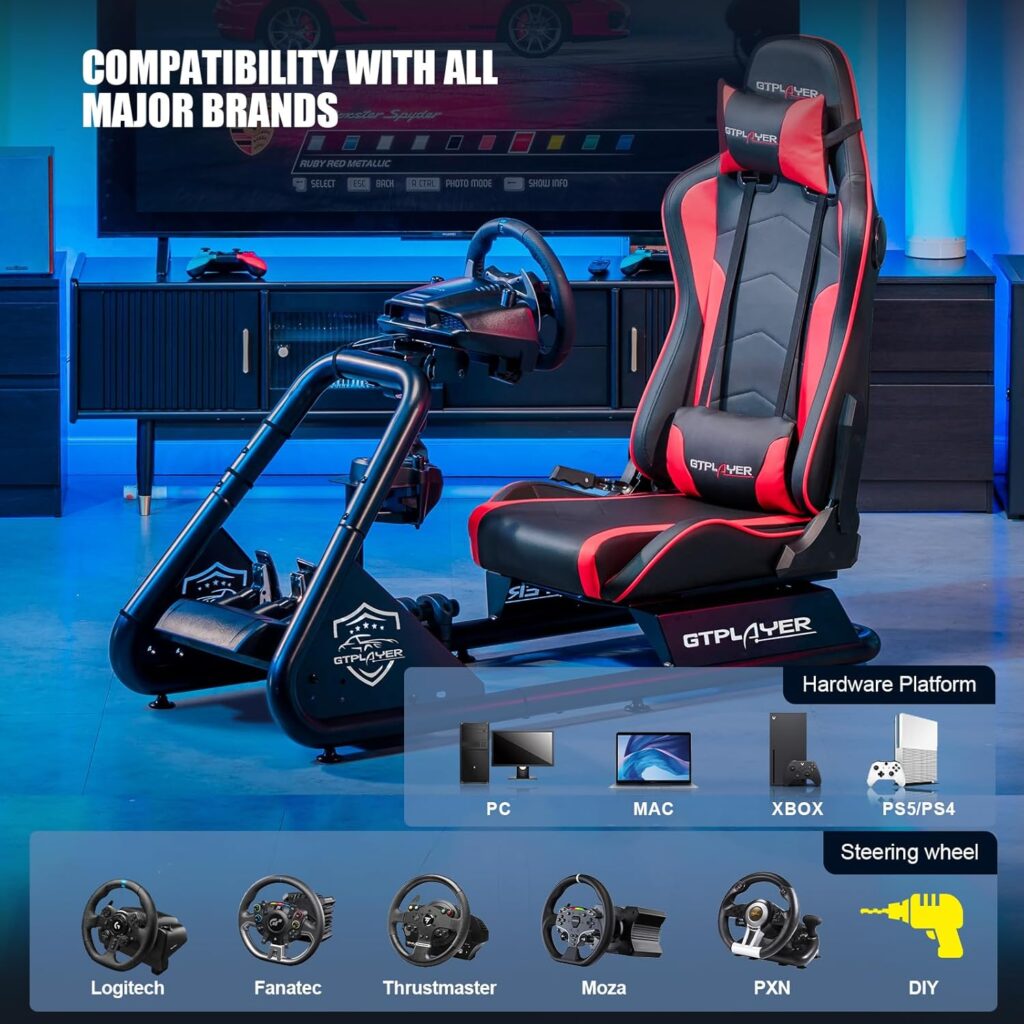Imagine the thrill of racing, the adrenaline pumping through your veins as you push your car to its limits, chasing that perfect lap time.
But how do you improve? How do you shave off those precious seconds that separate you from victory?
The answer lies in analyzing telemetry data. This powerful tool not only provides real-time insights into your car's performance, but it also allows you to make data-driven decisions that can drastically improve your lap times.
So, buckle up and get ready to discover the secrets hidden within the numbers, as we explore the world of analyzing telemetry data and how it can help you achieve the ultimate goal: faster lap times.
Key Takeaways
- Telemetry analysis is crucial for maximizing car performance and achieving optimal lap times.
- Reliable sensors and a comprehensive data acquisition system are essential for collecting and recording accurate telemetry data.
- Key telemetry metrics such as RPM, vehicle speed, throttle position, and G-forces provide valuable insights for improving lap times and driver techniques.
- Analyzing braking performance using telemetry data helps optimize brake pressure, improve corner entry techniques, and ultimately reduce braking distances for faster laps.
Importance of Telemetry Analysis
Analyzing telemetry data is vital for maximizing car performance and achieving optimal lap times. The importance of telemetry analysis can't be overstated. By providing real-time data on various aspects of car performance, telemetry allows engineers to make informed decisions and take immediate action. This data-driven approach helps improve both the speed and reliability of the car, ultimately leading to better lap times.
Telemetry analysis isn't limited to professional racing teams. Affordable telemetry analysis systems are now available for grassroots-level racing as well. This accessibility ensures that racers at all levels can benefit from the insights provided by telemetry data.
Proper utilization of telemetry data analysis can result in significant improvements in lap times and overall racing performance. By studying and understanding the data, racers and their teams can identify areas for improvement and make targeted adjustments to enhance their performance on the track.
Learning to analyze telemetry data is also beneficial at an individual level. By studying their own telemetry data, racers can gain valuable insights into their driving style, identify areas of weakness, and make necessary adjustments. This personal performance improvement can greatly contribute to achieving better lap times and overall success in racing.
Collecting and Recording Telemetry Data
To collect and record telemetry data effectively, it's crucial to utilize reliable sensors and a robust data acquisition system.
Telemetry data provides real-time information on car performance, allowing engineers to analyze and improve lap times.
Essential sensors for collecting and recording telemetry data include RPM, vehicle speed, throttle position, and G force. These sensors capture important data points that can be used to identify areas for improvement and optimize performance.
By comparing speed and throttle position data, engineers can determine the most effective cornering strategies to achieve better lap times. The data collected also helps in understanding driver behavior, improving car setup, and contributes to driver development and performance improvement.
To ensure accurate and reliable data collection, a robust data acquisition system is necessary. This system should be able to capture and store data from multiple sensors simultaneously, providing engineers with a comprehensive view of the car's performance.
Understanding Key Telemetry Metrics
Understanding key telemetry metrics is essential for improving car performance and achieving faster lap times. When it comes to analyzing telemetry data, lap time is one of the most crucial metrics to consider. Lap time provides a comprehensive overview of a car's performance on the track and serves as a benchmark for evaluating improvements. By closely examining lap times, you can identify areas where you're losing valuable seconds and make targeted adjustments to optimize performance.
To gain a deeper understanding of lap time, it's important to analyze the data in conjunction with other key metrics. RPM, vehicle speed, throttle position, lateral and longitudinal G forces, all play a significant role in lap time performance. By examining these metrics alongside lap time, you can identify patterns and correlations that can help you uncover the most effective cornering strategies, braking zones, and areas where driver consistency can be improved.
Data visualization is a powerful tool for interpreting telemetry metrics, including lap time. Graphs and charts allow for easy visualization of trends and patterns, enabling real-time feedback and immediate adjustments during races. By harnessing the power of telemetry metrics, including lap time, you can make data-driven decisions that will ultimately lead to improved car performance and faster lap times on the track.
Interpreting Telemetry Data for Lap Time Improvement
When interpreting telemetry data for lap time improvement, analyzing essential sensors such as RPM, vehicle speed, throttle position, and G-forces provides valuable insights into driver abilities and techniques. These metrics offer a comprehensive view of the car's performance and the driver's interaction with it.
By comparing the RPM and vehicle speed, you can identify areas where you may be losing time or not optimizing your gear changes. Additionally, analyzing the throttle position can reveal the optimal cornering strategies employed by the driver. Understanding the relationship between throttle inputs and vehicle speed can help fine-tune your technique and identify opportunities for improvement.
G-forces are another critical sensor to consider when interpreting telemetry data. They provide insights into how well the car is handling and how effectively the driver is using the available grip. By analyzing the G-forces during braking zones, you can pinpoint areas where you could potentially brake later or carry more speed into the corner. This information can help you optimize your braking technique and improve your lap times.
Analyzing Braking Performance for Faster Laps
To achieve faster laps, optimizing brake pressure is crucial. By analyzing telemetry data, you can identify the ideal brake pressure for each corner, allowing you to maximize deceleration while maintaining stability.
Additionally, focusing on corner entry braking techniques can help improve your lap times. Through data analysis, you can refine your approach to braking, ensuring smooth transitions and minimizing time lost during corner entry.
Lastly, trail braking techniques can be explored to further optimize braking performance, enabling you to carry more speed into corners and gain a competitive edge on the track.
Brake Pressure Optimization
Analyzing brake pressure data allows for the optimization of braking points and reduction of braking distances, resulting in faster lap times. By fine-tuning brake pressure through data analysis, you can achieve better control and stability through corners, improving corner entry and overall lap time consistency.
Telemetry data provides valuable insights into brake pressure, pedal modulation, and release timing, allowing you to adjust and optimize your braking strategy. Here are five key benefits of brake pressure optimization:
- Improved corner entry: Adjusting brake pressure helps you hit the ideal braking point, allowing for smoother and more controlled corner entry.
- Reduced braking distances: Optimizing brake pressure enables you to brake later and still maintain the desired deceleration, reducing overall braking distances.
- Enhanced lap time consistency: Fine-tuning brake pressure helps maintain a consistent braking performance throughout the race, leading to more predictable lap times.
- Increased stability: Understanding the impact of brake pressure on vehicle dynamics allows for better stability while braking, minimizing the risk of losing control.
- Efficient braking strategy: Utilizing telemetry data to adjust brake pressure contributes to achieving the most efficient and effective braking strategy for improved lap times.
Corner Entry Braking
By optimizing corner entry braking performance, you can further improve lap times and enhance overall race performance.
Analyzing the braking zone is crucial in identifying areas for improvement in corner entry performance. Telemetry data provides valuable insights into optimal braking strategies for faster lap times by monitoring brake pressure and release timing. It allows you to optimize braking points and reduce braking distances.
By analyzing telemetry data, you can understand the impact of different braking techniques on cornering performance. Telemetry data visualization tools enable racers to analyze and fine-tune corner entry braking performance, leading to improved lap times.
Utilizing this data-driven approach, you can make precise adjustments to your braking technique and maximize your potential on the track.
Trail Braking Techniques
Optimizing trail braking techniques is crucial for achieving faster lap times and enhancing overall race performance. To improve your trail braking skills, consider the following:
- Analyzing braking zones helps identify areas for improvement in trail braking techniques.
- Telemetry data provides insights into brake pressure, pedal modulation, and release timing for optimizing braking performance.
- Longitudinal G-force analysis shows driver consistency in braking, aiding in refining trail braking techniques.
- Integrating data with video gives a comprehensive view of trail braking performance and its impact on lap times.
- Telemetry data visualizations help in understanding the effects of trail braking on cornering speeds and overall lap performance.
Optimizing Acceleration and Cornering Techniques
To optimize your acceleration, focus on analyzing your throttle input and fine-tuning your launch control settings for maximum performance.
By understanding braking data, you can optimize your braking points and reduce braking distances, ultimately leading to better lap times.
Analyzing cornering speeds and the G-forces experienced will help you find the ideal racing line and make necessary adjustments to your suspension settings.
Acceleration Techniques
Improving your acceleration techniques is essential for achieving faster lap times in racing. By optimizing your acceleration, you can gain a competitive edge on the track.
Here are five key techniques to help you maximize your acceleration performance:
- Throttle input: Properly modulating the throttle allows for smooth and controlled acceleration, minimizing wheel spin and maximizing traction.
- Launch control: Utilizing launch control systems can help achieve optimal acceleration off the starting line, providing a crucial advantage in race starts.
- Fine-tuning: Analyzing telemetry data allows for precise adjustments to throttle modulation and release timing, optimizing acceleration performance.
- Speed on straights: Accelerating efficiently on straight sections of the track can lead to higher top speeds and reduced lap times.
- Corner exits: Proper acceleration out of corners is crucial for maintaining momentum and achieving faster lap times.
Cornering Strategies
By analyzing telemetry data, you can enhance your cornering strategies to optimize acceleration and improve overall lap times. Proper cornering strategies are crucial for achieving faster lap times.
Telemetry data analysis helps identify optimal cornering speeds and racing lines. It also aids in adjusting suspension settings to improve cornering performance.
By analyzing telemetry data, you can gain insights into the G-forces experienced during cornering, which can help improve vehicle stability. Additionally, fine-tuning throttle input based on telemetry data can optimize acceleration out of corners.
Utilizing telemetry data allows you to make data-driven decisions and refine your cornering techniques for better performance on the track. By implementing effective cornering strategies, you can maximize your speed through corners and ultimately reduce your lap times.
Fine-Tuning Suspension Setup Using Telemetry Data
Using telemetry data, you can fine-tune the suspension setup to optimize handling and traction on the track. This data provides valuable insights into the performance of your suspension system, allowing you to make precise adjustments for better on-track performance.
Here are five ways in which fine-tuning suspension setup using telemetry data can improve your lap times:
- Enhancing cornering performance: By analyzing suspension telemetry data, you can identify any weaknesses in your suspension setup and make necessary adjustments to optimize cornering performance. This includes adjusting shock absorber settings to improve grip and stability through corners.
- Balancing the suspension: Telemetry data helps in identifying any imbalances or inconsistencies in the suspension setup. By fine-tuning the suspension, you can ensure that weight distribution is optimized, resulting in improved traction and handling on the track.
- Smoother vehicle behavior: Fine-tuning the suspension setup using telemetry data allows you to achieve a smoother and more controlled vehicle behavior. This leads to better stability, reduced body roll, and improved overall performance.
- Maximizing traction: Suspension adjustments based on telemetry data can help maximize traction, especially during acceleration and braking. By optimizing suspension settings, you can ensure that the tires maintain optimal contact with the track surface, resulting in improved grip and faster lap times.
- Understanding vehicle dynamics: Analyzing suspension telemetry data provides valuable insights into the behavior of your vehicle on the track. This understanding allows you to make informed decisions when fine-tuning the suspension setup, leading to better overall performance.
Utilizing Telemetry Data to Enhance Racing Lines
To further optimize your lap times, telemetry data can be utilized to enhance racing lines and improve overall performance on the track. By utilizing telemetry data, you can analyze real-time car performance and make informed adjustments to your racing lines. This data analysis allows you to identify the optimal cornering strategies and braking zones, which can significantly improve your lap times.
To enhance racing lines, essential sensors such as RPM, speed, throttle position, and G forces are monitored and analyzed. This data provides valuable insights into your driving performance and helps you understand vehicle dynamics. With this information, you can adjust suspension settings, optimize acceleration and braking points, and fine-tune your racing lines accordingly.
Utilizing telemetry data isn't just about individual performance. It also enables effective communication and collaboration among racing teams. Data visualization from telemetry systems allows real-time feedback to be interpreted and shared, leading to immediate adjustments and improved racing lines.
Identifying and Correcting Driver Errors Through Data Analysis
Driver errors can be identified and corrected through the analysis of telemetry data. By leveraging data analysis techniques, racers can gain valuable insights into their performance and make data-driven decisions to improve lap times. Here are five ways data analysis helps in correcting driver errors:
- Identifying braking mistakes: Analyzing telemetry data allows you to pinpoint instances where braking is too early or too late, helping you optimize your braking points and reduce unnecessary time loss.
- Monitoring throttle application: Data analysis reveals moments of aggressive or inconsistent throttle application, enabling you to adjust your driving technique for smoother acceleration and better control.
- Spotting cornering errors: Telemetry data helps identify understeer or oversteer issues, allowing you to fine-tune your approach to corners and find the optimal racing line.
- Assessing gear selection: By analyzing RPM data, you can identify instances of improper gear selection, ensuring you're maximizing engine power and minimizing time spent shifting.
- Tracking lap consistency: Data analysis provides a comprehensive view of lap times, allowing you to compare multiple laps and identify areas where errors consistently occur, helping you focus on specific areas for improvement.
Through the power of data analysis, drivers can uncover and correct their errors, ultimately leading to improved lap times and enhanced overall performance on the racetrack.
Implementing Data-Driven Changes for Continuous Improvement
By harnessing the power of data analysis, racers can drive continuous improvement by implementing data-driven changes based on live car performance data. This process involves analyzing telemetry data to identify areas for improvement in car speed, reliability, and driver performance, ultimately leading to better lap times. Affordable data analysis systems are now available even at grassroots racing levels, providing opportunities for continuous improvement. By utilizing these tools, racers can make informed decisions and implement changes that have a direct impact on their performance on the track.
To illustrate the importance of implementing data-driven changes, consider the following table showcasing three key areas that can be optimized through data analysis:
| Area of Improvement | Data-Driven Change | Result |
|---|---|---|
| Cornering Strategies | Adjusting racing line based on telemetry data | Improved exit speed and reduced lap times |
| Braking Zones | Modifying braking points based on data | Reduced braking distances and faster laps |
| Driver Consistency | Analyzing driver behavior using telemetry | Enhanced lap-to-lap consistency and accuracy |
Frequently Asked Questions
How Can I Improve My Lap Time?
To improve your lap time, start by optimizing your tire pressure. Proper tire pressure ensures maximum grip and stability.
Analyzing telemetry data can help you identify the ideal tire pressure for different track conditions. By monitoring data such as tire temperature and wear, you can fine-tune the pressure to achieve optimal performance.
How Can I Reduce My Lap Time?
To reduce your lap time, focus on improving your driving techniques. Mastering optimal braking points, smooth throttle application, and finding the perfect racing line are key.
Analyzing telemetry data can provide valuable insights into your performance. By studying data on braking zones, throttle position, and G-forces, you can fine-tune your cornering strategies and acceleration.
Understanding vehicle dynamics and making real-time adjustments based on telemetry data visualization will help you optimize your lap times and achieve better results on the track.
Why Is Telemetry Important?
Telemetry analysis is crucial for improving your lap times. By utilizing real-time data on car performance, you can make immediate adjustments during races to enhance your overall performance.
Telemetry provides valuable insights into car dynamics, allowing you to optimize your driving techniques and racing strategies.
With affordable data analysis systems available, even grassroots level racing can benefit from the power of telemetry.
Embrace telemetry analysis to unlock your full racing potential and achieve faster lap times.
What Is an Example of Telemetry Data?
Telemetry data is like a magic crystal ball for your car's performance. It provides a wealth of information that can be analyzed to improve your lap times.
For example, you can see your speed, RPM, throttle input, and brake pressure in real-time. This data allows for precise analysis and helps you understand how to optimize your braking and acceleration.
With telemetry data, you can fine-tune your driving techniques and make informed adjustments to your car's setup.
Conclusion
In conclusion, analyzing telemetry data is essential for achieving faster lap times in racing. By utilizing real-time information on braking and acceleration performance, racers can optimize their driving techniques and make precise adjustments during races.
An interesting statistic to highlight the effectiveness of telemetry analysis is that professional racers who actively analyze their data have been shown to improve their lap times by an average of 1-2 seconds per lap, resulting in a significant competitive advantage on the track.




